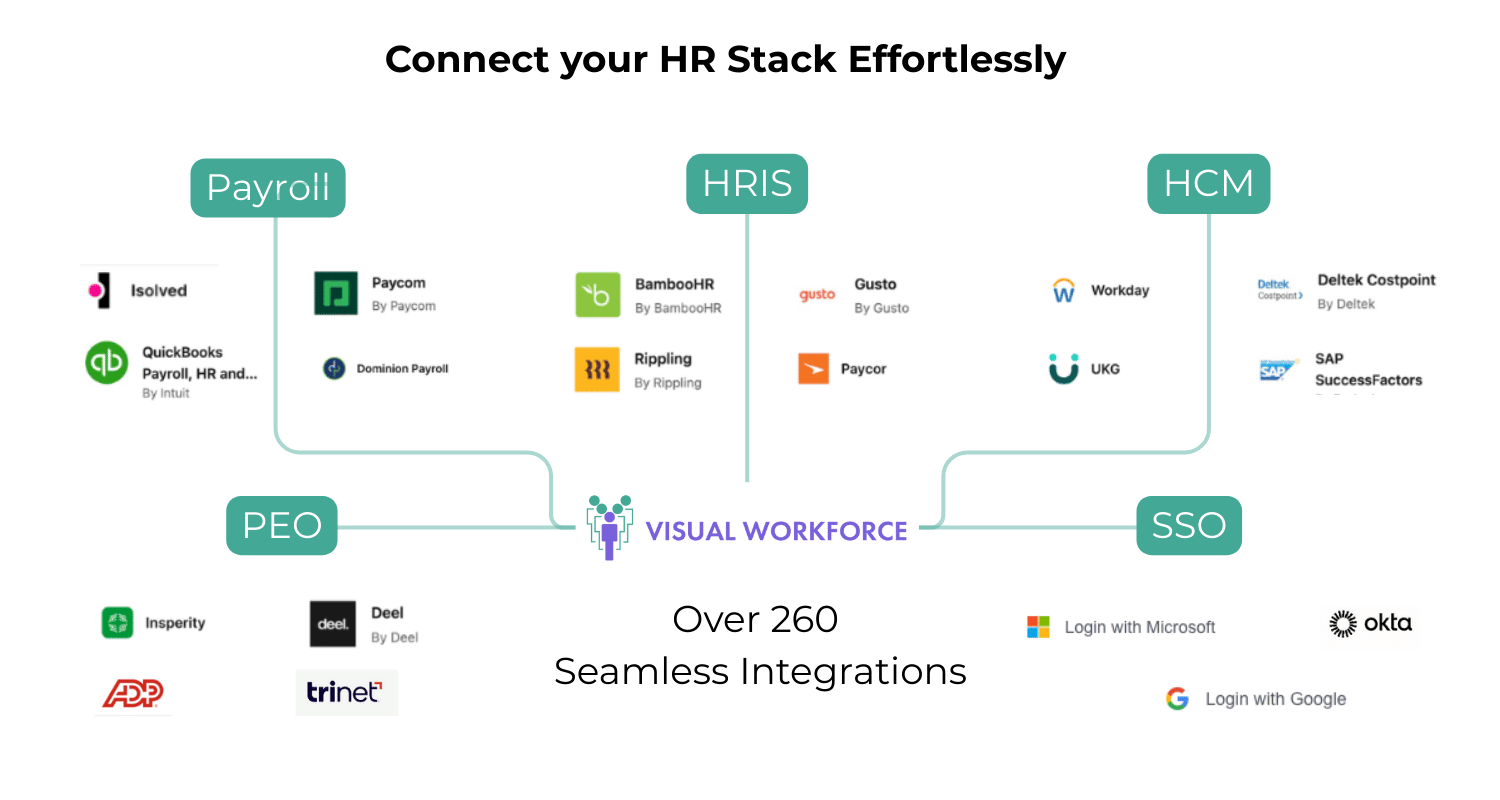How to Avoid A Skills Gap in a Growing Venture
Updated on March 2, 2025: Added new information and updated statistics with recent developments on the skills gap.
Skills gaps have evolved from a localized concern to a critical global challenge, acting as a significant impediment to business growth and innovation. The World Economic Forum's (WEF) 2025 Future of Jobs Report powerfully illustrates this, asserting that the inability to meet rapidly evolving skills demands is not merely slowing progress, but fundamentally reshaping industries and creating unprecedented pressures for both workers and employers. This isn't just about technical skills; it's about the broader spectrum of competencies needed for the future of work. Lightcast's analysis further emphasizes this, revealing the persistent and widening mismatch between employer needs and the skills readily available in the workforce.
The focus is shifting to 'power skills' or human skills, such as critical thinking, problem-solving, creativity, and emotional intelligence, which are increasingly valued alongside technical proficiency. This skills deficit is not only leading to prolonged vacancy durations, but also impacting productivity, innovation, and overall competitiveness. The ripple effects of these skills gaps are profound: they contribute to wage stagnation for some, while driving up costs for employers seeking specialized talent. They exacerbate inequalities, as those without access to reskilling and upskilling opportunities are left behind. In essence, the skills gap is not just a talent shortage; it's a structural challenge that demands a collaborative effort from governments, educational institutions, and businesses to invest in continuous learning, promote lifelong employability, and foster a culture of adaptability.
However, the implications of a skills gap takes on a different, often more intense meaning for a growing venture than an established corporation. Startups operate in a high-growth environment. Decisions come with high stakes, yet founders don’t have the same luxury of time or resources as a corporation. It’s no surprise then that 90% of startups fail.
If your venture has gained traction and found its product-market fit, congratulations! Now you're ready to take the leap to the next stage, growth. For a startup to continue to succeed it must scale with the demands of the market. While market demand will drive sales, rapid growth doesn’t happen by accident. Scaling your company requires deliberate planning and preparation to keep up your growing demand once you open the floodgates.
Unfortunately, many startups dive into the growth stage without a well thought-out scaling strategy. According to the Startup Genome Project, “premature scaling is the most common reason for startups to perform worse. They tend to lose the battle early on by getting ahead of themselves.”
Your Company is Evolving… So Should Your Team
While there are many components to developing a growth strategy that gets results, we find one of the most important components is your team. To scale hard and fast, a founder must have the right capabilities and skills on his or her team to make the tough transition.
These skills and capabilities often look very different from the initial requirements of an early-stage startup where the goal is to develop, test, and generate traction for the initial product or service. In the growth stage, your team needs to systematize operations, aggressively raise capital, and develop a scalable sales and marketing strategy.
Do you see why each stage requires a different set of skills? If a founder is not aware of this difference, a skills gap can start to form and threaten growth potential.
Related Post: How Skills Planning Can Help Your Company Achieve 6 Types of Transformations
Startups Must Prioritize Talent Management to Scale and Succeed
While it’s important for all companies to develop and execute a talent management strategy, growth-stage startups should look to align their team’s skills and capabilities with their growth strategy.
Why is it so important for startups to prioritize talent management and skills planning?
First, the small-team nature of a startup means employee performance is highly connected. Unlike a corporate environment, one employee can have a significant effect on the outcome of the startup. A bad hire, whether poor skills or cultural fit can easily drag down the performance of your whole team. Likewise, a good hire can complement or even enhance others’ capabilities, driving better performance from the whole team.
Second, cash reserves are limited. Founders must have a core strategy for selecting and managing talent because there is little wiggle room for mistakes. Corporations have big budgets to invest in advanced systems, formal training programs, and an army of managers. Startups likely do not have extensive resources or need to allocate funding to other areas of the business. However, limited resources isn’t an excuse to ignore your talent strategy. In fact, it means you should invest meaningful time to ensure you are getting the right people from the start and developing your team as your startup grows.
Third, all startup jobs require unique flexibility from employees. Small teams and a fast-paced environment often require employees to wear multiple hats, especially on the leadership team. A founder might take the formal role of CEO but also execute financial tasks typically managed by a CFO. Likewise, a back-end architect may also need to do some front-end work on the application. Flexibility is a must in the startup job world. Your talent management strategy can help you find and retain talented individuals whose hard and soft skills are uniquely suited for the rapidly changing startup environment.
Fourth, when startups hit their growth stage, you must recruit leaders who can bring organization and expertise to the chaos. At this point, founders need to prioritize leadership. Selecting and keeping the right leaders can be challenging if you are not actively aware of what your current team’s strengths and weaknesses. A talent management strategy can help guide you.
How to Plan Your Talent Management Strategy and Avoid a Skills Gap
Incredibly, 50% of all emerging companies do not have a formal talent strategy. As a founder, the most important step you can take to prevent a skills gap is to plan, plan, plan. When it comes time for your company to grow, the last thing you want is to do is put out fires that could have been prevented by simply planning ahead.
To help get you started, here are some actionable steps you can take today to anticipate and plan for your team’s skill needs when you reach the growth stage:
1 | Outline the skills you have and the skills you will need
To understand where you need to go, you must first know where you are. The same goes for your team’s skills and capabilities. First, identify your team’s existing roles and skill requirements. Now ask yourself, what additional roles and skills will my growth strategy require?
2 | Develop a skills inventory to track your team’s skills and growth
Now that you’ve outlined the skills requirements, it's time to develop a system for tracking and managing your team’s skills. You want to invest in skill management software that allows you to track current skills to compare against your requirements. We recommend using a tool called a skills inventory.
Related Post: The Best Way To Identify and Track Your Team’s Hard and Soft Skills
What is a skills inventory? It’s a tool that allows you to identify the current skills and capabilities of your workforce. It helps you recognize skill gaps and provides a clear vision for how your workforce needs to change or grow.
A good skills inventory leverages data visualizations to quickly and accurately draw insights from your skills inventory. Take a look at the skills inventory example below:
In this skills inventory example, the bar chart allows you to compare where your team is now against your skills requirements for growth. As a founder, you don’t always have the luxury of time. Data visualization allows you to make data-driven decisions in a timely manner.
Related Post: 4 Ways Data Visualization Can Improve Your Decision Making
3 | Take action and focus on employee growth
Once you set up your skills inventory and have identified opportunities for growth, put those insights into action. How will you help your team reach the skills and capabilities necessary to make the transition to the growth stage and scale successfully? Do you need to recruit for the right skills or can you train your existing talent? There’s always an argument for both, but a strong emphasis on employee growth can help you develop a stronger culture, retain top talent, and use your resources wisely.
Related Post: Why Your Employees Want You To Focus on Career Growth, Not Just Engagement
Ready to invest in the future of your workforce?
Learn how Visual Workforce can help you discover and optimize the skills and capabilities of your people, teams, and projects.
Subscribe
Sign up to receive updates and announcements from Visual Workforce.








